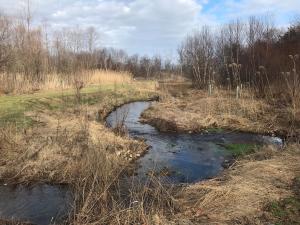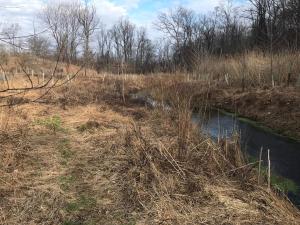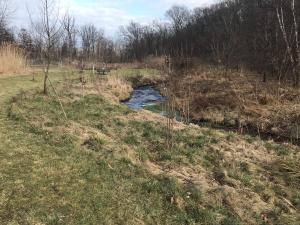Creek Maintenance Fact Sheet
 Solebury Township enjoys many creeks, all of which flow through private property to the Delaware River. The Township provides information for residents and watershed organizations which have creeks running through their property.
Solebury Township enjoys many creeks, all of which flow through private property to the Delaware River. The Township provides information for residents and watershed organizations which have creeks running through their property.
Individual property owners are responsible for creek bank and bed repair, maintenance, and appropriate permitting. Solebury’s creeks and their tributaries include the Paunacussing, the Copper Nose, the Cuttalossa, Laurel Run, the Primrose, Rabbit Run, the Aquetong, the Neshaminy, Dark Hollow Run and the Pidcock. With exception of the Neshaminy, the above creeks and tributaries predominantly drain to the Delaware River South Watershed.
Several state and federal agencies have jurisdiction over the creeks. Since creeks are considered “Waters of the U.S.” The Pennsylvania Department of Environmental Protection and the U.S. Army Corps of Engineers have the authority under the Clean Water Act (section 404) for activities such as placement of rip-rap (stone), placement of fill material, disturbance of stream banks, etc.
The creek channel is a dynamic environment, constantly changing, and erosion is a natural part of the creek's makeup. Some sections of creeks may require ongoing maintenance to keep erosion in check, while other sections may need riparian buffer upgrades and/or maintenance. Riparian areas directly adjacent to the creek banks should be maintained with trees and high grasses. These items help cool the waters in the creeks and filter out the sediment which is harmful to creeks. Care should be taken to avoid planting invasive species. The maintenance of creeks is the responsibility of the property owner and could require permitting from state and federal agencies, as well as Solebury Township.
 Some activities that property owners do can be more harmful than helpful. For example, removing vegetation from the creek banks and mowing the lawn right up to the top of the creek bank is harmful to the creek’s health. Vegetation is vital to keep erosion to a minimum and long grasses intercept sediment that is carried by stormwater runoff. Routine maintenance of large trees is also an important activity that provides the shade for the creeks’ water and provides benefits with regards to reducing stormwater runoff. If trees are not maintained, fallen trees and tree limbs will block the stream flow and collect debris which can cause flooding during a storm event. Storing firewood close to streams is not advised. During flood events, firewood and other debris are easily swept away by water and subsequently create problems downstream: Debris clogs culverts and storm sewers. Solebury Township regularly hears about clogged culverts causing road and property destruction after almost every hurricane event in the recent years! On the other hand, and in the absence of flood danger, it is natural for the occasional fallen tree to remain in the water, which serves to dissolve and increase oxygen, reduce erosion and provide a pooling habitat for macro-invertebrates. Residents are encouraged to contact the state agencies and Solebury Township before starting any work in or around creeks.
Some activities that property owners do can be more harmful than helpful. For example, removing vegetation from the creek banks and mowing the lawn right up to the top of the creek bank is harmful to the creek’s health. Vegetation is vital to keep erosion to a minimum and long grasses intercept sediment that is carried by stormwater runoff. Routine maintenance of large trees is also an important activity that provides the shade for the creeks’ water and provides benefits with regards to reducing stormwater runoff. If trees are not maintained, fallen trees and tree limbs will block the stream flow and collect debris which can cause flooding during a storm event. Storing firewood close to streams is not advised. During flood events, firewood and other debris are easily swept away by water and subsequently create problems downstream: Debris clogs culverts and storm sewers. Solebury Township regularly hears about clogged culverts causing road and property destruction after almost every hurricane event in the recent years! On the other hand, and in the absence of flood danger, it is natural for the occasional fallen tree to remain in the water, which serves to dissolve and increase oxygen, reduce erosion and provide a pooling habitat for macro-invertebrates. Residents are encouraged to contact the state agencies and Solebury Township before starting any work in or around creeks.
 Activities that DO NOT require Permits:
Activities that DO NOT require Permits:
- Removal of trash and debris from creek banks or in creek beds.
- Minor Trimming of vegetation on the creek bank. Keep as much of the tree canopy as possible since the canopy provides shading for the creeks water and slows stormwater runoff.
- Planting bushes and trees along creeks. Do it!
Activities that DO Require Permits:
- Large scale debris removal.
- Vegetation or tree removal.
- Alteration of creek channel or its banks.
- Stabilization of creek banks.
- Dredging.
- Dumping of dirt, rocks, concrete, etc. into channel or eroded banks.


